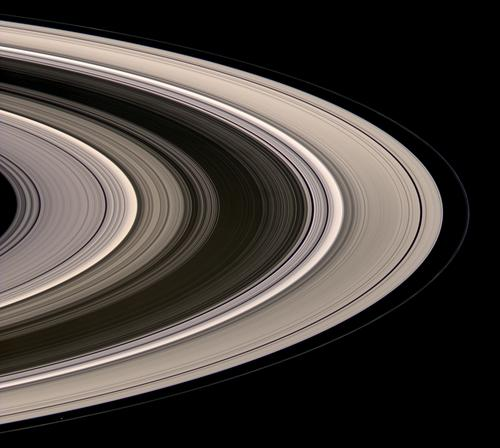Saturn's enigmatic rings may be much older and also much more massive than previously thought, according to a new study. Because Saturn's rings look so clean and bright, it was thought the rings were younger than the planet itself, which is estimated to be about 4.5 billion years old. But using data from the Cassini spacecraft's UVIS (Ultraviolet Imaging Spectrograph) instrument, Principal Investigator Dr. Larry Esposito and his team used computer simulations to study colliding particles in Saturn's rings and their erosion by meteorites. Their results support the possibility that Saturn's rings formed billions of years ago, perhaps at the time when giant impacts excavated the great basins on the Moon. The findings also suggest that giant exoplanets may also commonly have rings.
"Both Cassini observations and theoretical calculations can allow the rings of Saturn to be billions of years old. This means we humans are not just lucky to see rings around Saturn. This would lead us to expect massive rings also to surround giant planets circling other stars," said Esposito.
Also, simulations run by Esposito's colleagues Glen Stewart and Stuart Robbins from the University of Colorado showed that Saturn's ring particles clump together, meaning previous estimates of the mass might be too low, perhaps by a factor of 3.
[caption id="attachment_18489" align="alignnone" width="580" caption="Saturns rings strip. Credit: NASA/JPL"]
[/caption] Meteorites slowly grind and shatter the particles in the ring. Gradually, a layer of dust and fragments builds up and covers each particle, making each particle more massive while "cleaning up" the rings.
Recycling of ring material extends their lifetime and reduces the darkening that was expected previous to this study if the rings were older.
One problem with this proposal for more massive and ancient rings is that the Pioneer 11 space mission to Saturn in 1979 measured the ring mass indirectly by observing charged particles created by cosmic rays bombarding the rings.
"Those mass estimates were similar to the ones from Voyager star occultations, apparently confirming the previous low mass value. However, we now recognize that the charged particles are double-valued. That means they could arise from either a small or large mass. We now see that the larger mass value could be consistent with the underestimates due to ring clumpiness," said Esposito.
Source: European Planetary Science Congress
 Universe Today
Universe Today
